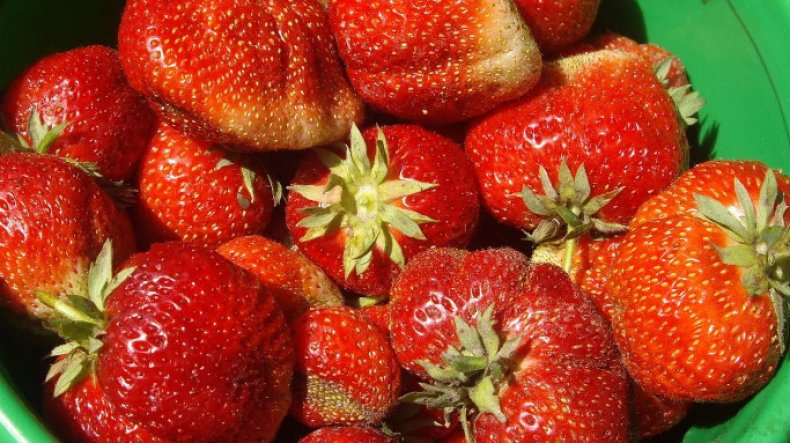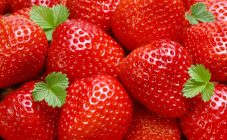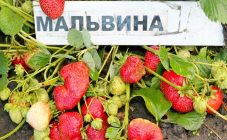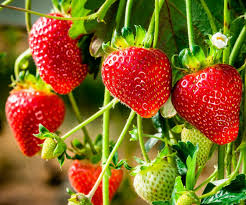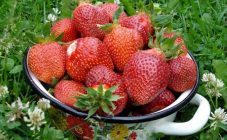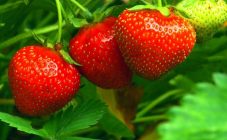Content:
There are many varieties of strawberries. One of the most resistant to weather conditions is Vicoda, which gives large yields and large fruits.
Dutch breeders bred Vikoda strawberries. Subspecies - Wim and Tarda strawberries.
In other languages it sounds like Vicoda, and in Russian it can be used like Vicodo.
The strawberry species is considered large-fruited and highly productive. The ripening period occurs at a later date than that of other varieties of culture.
Features and characteristics
Vicoda strawberry description:
- Large-fruited. The color is bright red;
- The taste is pleasant. Sweet and sour, reminiscent of cherries. The structure is delicate, dense, red, containing no voids;
- The shape of the fruit is different: both comb-like and round;
- The average weight of fruits is 70 grams. The maximum weight reaches 120 g;
- This culture has late fruiting, around the end of July;
- The bush is strong, vigorous, medium in height. The shoots are thick;
- The leaves are large, light green, cut with denticles along the edges;
- There are few mustaches in the first year, and in the next - a moderate amount;
- The variety is winter hardy;
- Whitening at the tip is a sign of maturity;
- Sepals are easily separated;
- Can bear fruit in the first year;
- The yield is high;
- Used as a dessert, for preservation and freezing;
- Inflorescences are large, white in color, bisexual, do not curl;
- Heat and drought does not tolerate well;
- Fruiting for more than 4 weeks;
- Susceptible to powdery mildew and verticillosis, does not suffer from leaf rot and spotting;
- Duration of fruiting - maximum 4 years;
- Fruits are perfectly transported and do not lose their presentation.
Strawberries are very popular with gardeners.
Agricultural technology of cultivation
For good yields, you must follow all the rules for planting and caring for strawberries.
Landing
Suitable soil types for Vicoda strawberries:
- loamy;
- black earth;
- gray forest soils.
The optimum humidity for growing crops is 65-70 percent. The acidity of the soil should be 2.7-6.2. Groundwater should pass no closer than 60 centimeters to the surface. It is good to plant strawberries in places where petunias, onions, garlic or cereals grew before.
Basic principles for the selection of seedlings:
- root collar - more than six millimeters in diameter;
- root processes should be more than 7 cm;
- the plant should have about three leaves and a whole apical bud.
Landing rules:
- plant seedlings in early spring or late August - early September;
- it is advisable to choose a cloudy day or you will need to shade for 2 weeks;
- form holes at a distance of 40 cm, half a meter recede between the rows;
- pour water, arrange the roots neatly and freely, sprinkle tightly, the growth point should be above the ground;
- the soil is compacted and moistened;
- mulch with humus to prevent crust formation.
The weed is removed before planting. Organic fertilizers are introduced, dug up. Preparation is done in the fall. If they plan to plant in late August - early September, then the soil is prepared in a month so that it does not sag and the roots are not exposed.
Care
Prevention measures are needed to obtain rich yields and protect strawberries from pests.
The main measures for the care of the crop:
- Watering. In the spring, the soil is moistened every 7 days. During flowering and fruiting, watered with warm water 2-3 times a week. In the fall, continue watering in the same mode until a cold snap;
- In order to avoid cracking and drying out of the soil, mulching with straw or film is used;
- Fertilization is carried out in the spring. Organic and mineral supplements with a set of trace elements are required. Manure and humus are considered one of the oldest fertilizers. Also used: chicken manure, fermented milk, bread, nettle dressings. From minerals: sulfates, saltpeter, urea, nitroammofosk;
- Weed control. As needed, carry out regular weeding in order not to use chemicals;
- Diseases and pests. It is necessary to examine the leaves and fruits. When diseases are detected, plants are treated. Fixed assets: from powdery mildew and rot are treated with fungicides, everything that is affected is removed; with a nematode and a strawberry mite, chemicals and folk remedies are used;
- Preparing for the winter. If the roots have crawled out, they are buried in earth. The bushes themselves are covered with straw and spruce branches.
Breeding features
There are several options for breeding strawberries:
- Seeds... They are used mainly for obtaining new crops. It is not suitable for this type, since the fruits and leaves will turn out to be small and undergrowth;
- Mustache... Peduncles are partially removed. When the strawberries bear fruit, choose the bushes that are more fruitful. After harvesting, the rosette is lightly pressed into the ground. Later, the formed bushes are planted. This time falls on the end of summer, beginning of autumn;
- Division bush... It is used less often. Choose the healthiest bush, where there is more than one tip with a rosette. Dig it out and carefully separate. Varietal material is planted in the prepared pits, the roots are well sprinkled and watered. The outlet is also separated from the main bush and planted.
Compliance with all care rules guarantees the harvest as early as the next year after planting.
Advantages and disadvantages
Positive qualities of culture:
- Vicoda is large-fruited;
- Excellent taste;
- High yield;
- Resistant to changing climatic conditions;
- During transportation, it does not lose its qualities and presentation;
- Berries are versatile in use. Can be used in compote, jam, eaten fresh, and also frozen;
- Winter hardy;
- Resistant to diseases and pests.
Negative qualities:
- Loses its density during drought;
- Requires a wide planting of bushes.
Many gardeners and gardeners are very fond of Vicoda strawberries. Its berry is tasty, juicy, large and ripens when other species have already finished fruiting. This is great for culture lovers.
